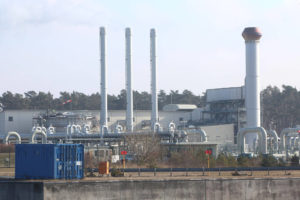A mature tree absorbs approximately 48.5 pounds of carbon annually. In comparison, solar panels offset about 0.85 pounds of carbon per kilowatt-hour (kWh) of electricity generated. This stark contrast raises an important question: Is it justifiable to cut down trees to install solar panels? The answer involves a careful consideration of carbon emissions, environmental sustainability, and the intrinsic value of nature.

Carbon Sequestration: Trees vs Solar Panels
According to an analysis by the European Environment Commission, a single tree sequesters 22 kilograms (48.5 pounds) of carbon each year. This carbon remains stored until the tree dies and releases it as methane. In a mature forest, there are typically 100 to 400 trees per acre, capable of sequestering between 4,850 and 19,400 pounds of carbon annually.
However, it’s important to note that these figures apply only to mature trees with intact trunks. Shrubs and saplings capture only a fraction of the carbon that large, mature trees do. This distinction is crucial when evaluating whether to remove trees for solar installations.
Solar Panels: A Powerful Carbon Offset Tool
The carbon offset potential of solar panels varies depending on the region’s energy mix and the duration of electricity generation. For instance, solar installations in Nebraska, where coal supplies about half of the electricity, offset significantly more emissions than those in upstate New York, which relies heavily on cleaner hydropower.
On average, the U.S. emits 0.85 pounds of carbon dioxide per kWh of electricity generated. A standard 400-watt solar panel producing 1.5 kWh per watt annually can offset 510 pounds of CO2 emissions. Solar panel output varies by location, with panels in sunnier southern regions generating more electricity than those in northern areas.
Comparing Carbon Offsets: Solar Panels vs Trees
A single solar panel can offset the carbon equivalent of more than ten mature trees. A typical residential solar installation, around 7,000 watts, can offset the carbon equivalent of over 180 trees. On a larger scale, an acre of solar panels with an installed capacity of 250,000 watts can offset more carbon emissions than 6,500 trees.
From a carbon emissions perspective alone, a residential solar installation is more valuable than a few trees. In fact, one acre of densely installed solar panels offsets at least 16 to 65 times the carbon emissions of an equivalent area of forest.
Additional Benefits of Solar Installations
Carbon offsets are not the only advantage of solar facilities. When installed on well-managed land, solar panels can contribute to additional carbon sequestration. For example, native forage plants grown beneath solar panels can improve soil quality, sequestering up to 1 ton of carbon per year. This process can continue for 12 to 15 years until the soil reaches full saturation.
Research in the upper Midwest of the United States found that native grass species planted alongside 10 GW of solar capacity could sequester 129.3 tons of carbon per hectare. This outperforms traditional agricultural farming and solar-turf scenarios by 65% and 35%, respectively.
Balancing Nature and Technology
While preserving large tracts of natural environments is essential for maintaining a healthy ecosystem and supporting human survival, there are scenarios where removing some trees for solar installations can yield net environmental benefits. Solar panels not only offset carbon emissions but also contribute to additional carbon sequestration when integrated with sustainable land management practices.
In conclusion, solar panels can indeed outperform trees in carbon offsetting under certain conditions. By carefully balancing the need for renewable energy with the preservation of natural ecosystems, we can achieve a more sustainable and low-carbon future.



